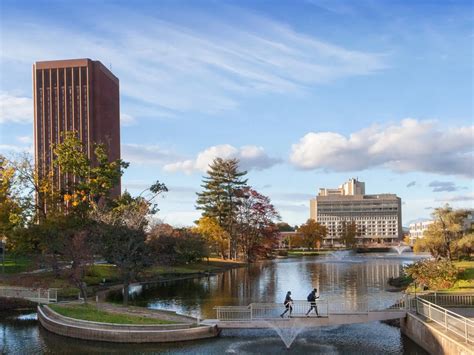Curious about the esteemed University of Massachusetts? Wondering about its rich history, sprawling campuses, and renowned academic programs? Look no further. This comprehensive guide delves into the heart of UMass, exploring its diverse offerings, notable alumni, cutting-edge research, and vibrant student life. Whether you're considering becoming a part of the UMass community or simply seeking a deeper understanding of one of New England's leading universities, this article will provide you with a wealth of information and insights.
History of the University of Massachusetts
The University of Massachusetts (UMass) is a public land-grant research university system in Massachusetts, consisting of five campuses located across the state. It was founded in 1863 as the Massachusetts Agricultural College, and became the University of Massachusetts in 1947.
The university's history is closely tied to the development of higher education in the United States. In the 19th century, the Morrill Land-Grant Act provided federal land to establish colleges that focused on agriculture and mechanical arts. Massachusetts Agricultural College was one of the first institutions to be established under this act, and it played a vital role in the development of agriculture and industry in the state.
In the 20th century, the university expanded rapidly, adding new campuses and academic programs. It became a major research institution, and its faculty and students made significant contributions to fields such as agriculture, engineering, and the social sciences.
Founding and Early Years
Massachusetts Agricultural College was founded in 1863 in Amherst, Massachusetts. Its mission was to provide practical education in agriculture and related fields. The college's first classes were held in a converted barn, and its first students were primarily farmers and their sons.
In the early years, the college struggled financially and academically. However, it received a major boost in 1887 when it was designated as a land-grant institution under the Morrill Land-Grant Act. This designation provided the college with federal funding and land, which allowed it to expand its facilities and hire more faculty.
By the early 20th century, Massachusetts Agricultural College had become a major agricultural research institution. Its faculty made significant contributions to the development of new crops and farming methods, and its graduates went on to become leaders in the agricultural industry.
Expansion and Growth
In the 20th century, the university expanded rapidly, adding new campuses and academic programs. In 1912, the university opened a campus in Boston, which became the University of Massachusetts Boston.
In 1931, the university opened a campus in Worcester, which became the University of Massachusetts Medical School. In 1947, the university's name was changed to the University of Massachusetts, and it became a full-fledged research university.
In the 1950s and 1960s, the university expanded rapidly, adding new campuses in Dartmouth, Lowell, and Springfield. These campuses offered a wide range of undergraduate and graduate programs, and they helped to make the university a major force in higher education in Massachusetts.

Contemporary Era
In the 21st century, the university has continued to grow and expand. It has added new academic programs, such as the University of Massachusetts School of Public Health and Health Sciences, and it has opened new facilities, such as the University of Massachusetts Amherst Life Sciences Laboratory.
Today, the University of Massachusetts is a major public research university system with a global reputation for excellence. Its faculty and students are making significant contributions to research, scholarship, and creative activity, and its graduates are going on to become leaders in a wide range of fields.
Campuses of the University of Massachusetts
The University of Massachusetts has five campuses located across Massachusetts:
- University of Massachusetts Amherst
- University of Massachusetts Boston
- University of Massachusetts Dartmouth
- University of Massachusetts Lowell
- University of Massachusetts Medical School
Each campus has its own unique character and academic offerings.
University of Massachusetts Amherst
The University of Massachusetts Amherst is the flagship campus of the University of Massachusetts system. It is located in the town of Amherst, Massachusetts, and it has an enrollment of over 30,000 students.
UMass Amherst offers a wide range of undergraduate and graduate programs, and it is ranked among the top public universities in the country. The university is particularly strong in the areas of agriculture, engineering, and the social sciences.
The University of Massachusetts Amherst campus is home to a number of notable buildings and landmarks, including the W.E.B. Du Bois Library, the Fine Arts Center, and the Mullins Center.
University of Massachusetts Boston
The University of Massachusetts Boston is located in the heart of Boston, and it has an enrollment of over 16,000 students.
UMass Boston offers a wide range of undergraduate and graduate programs, and it is particularly strong in the areas of business, education, and health sciences.
The University of Massachusetts Boston campus is home to a number of notable buildings and landmarks, including the John F. Kennedy Library, the Edward M. Kennedy Institute for the United States Senate, and the Boston Convention and Exhibition Center.



